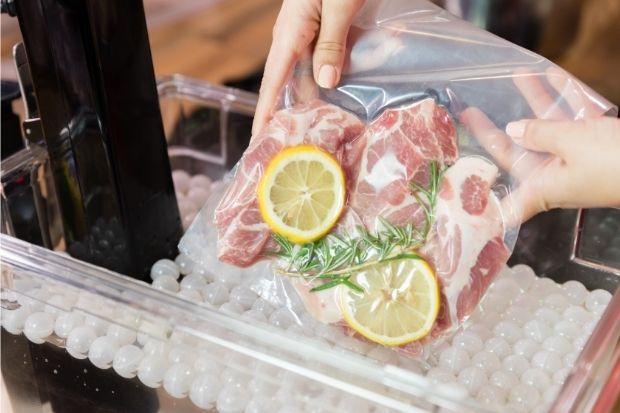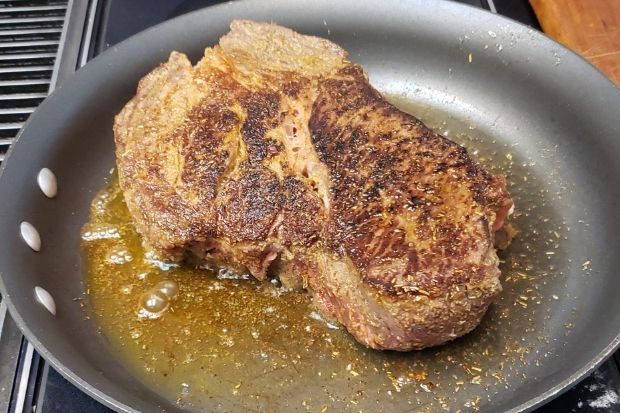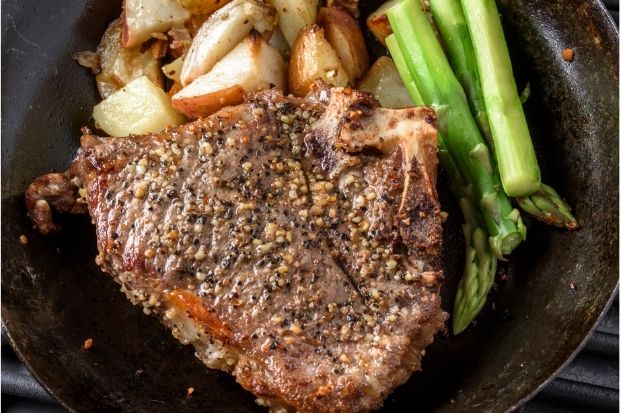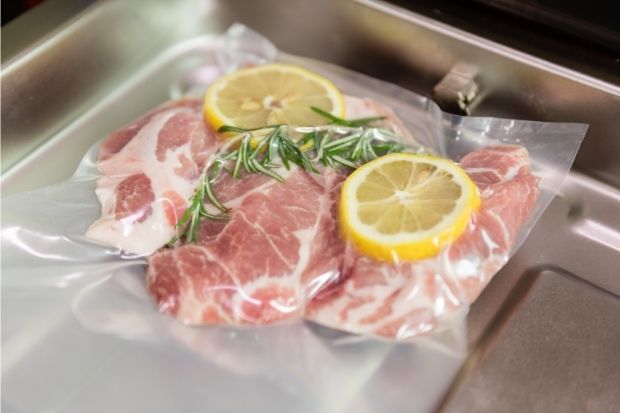There are many approaches to cooking a perfect steak, all with their own distinct advantages.
If you’re curious about using sous vide vs. reverse sear cooking, just know that the former involves vacuum-sealing the food in a bag and cooking the bag in water, while the latter involves searing the food after cooking it in an oven. Both have pros and cons, and we’ll go over each of them in this article.

Sous Vide Explained
Sous vide cooking involves vacuum-sealing a steak or other food in a bag and then slow-cooking the bag until the food reaches a certain temperature. Sous vide is French for “under vacuum.” When you cook your steak this way, you have to cook it at a precise temperature. You can choose a steak that is rare, well done, or anything in between.
Advantages of Sous Vide
There are definite advantages to cooking sous vide style. First of all, since the meat is slow-cooked and kept in a bag, the juices and flavors of the meat are sealed in to make the meat very tasty. It also cuts down on the dryness sometimes experienced with other cooking methods. Sous vide cooking can accommodate all thicknesses of meat, so you won’t have to slice the meat and make it thinner before you cook it.
Disadvantages of Sous Vide
There aren’t too many disadvantages of sous vide cooking, but the main one is that if you want to sear the meat after you cook it this way, you can only do so if the meat isn’t too thin. Some people also have some concerns about the health aspects of sous vide cooking because the recommended temperature for sous vide is 130 to 140 degrees Fahrenheit, which may or may not be high enough to kill bacteria.
Best Meats for Sous Vide
The best meats for sous vide cooking are steaks of all cuts including filet mignon, T-bone, New York and ribeye, to name a few. While it’s possible to cook other types of meat sous vide style, the truth is that steaks tend to come out better than other types of meat. Steaks, in fact, are the best types of meat to use this style of cooking on.
Reverse Searing Explained

The reverse sear method involves a very simple cooking process. Instead of searing your meat and then cooking it in the oven, the reverse is done. The reverse sear way of cooking steak involves baking the steak in an oven set between 200 and 275 degrees Fahrenheit. Once the internal temperature of the steak gets to 10-15 degrees below what it needs to be according to the way you want the meat cooked, you’ll remove it and give it a good searing in a pan.
Advantages of Reverse Searing
The reverse searing method of cooking guarantees you’ll get a nice crispy brown crust on the outside of the meat, giving it an amazing flavor. It also allows for more control over how the meat is cooked, whether you want it rare, well done, or anything in between.
Disadvantages of Reverse Searing
The main disadvantage of reverse searing is that it cannot be done on meat that is thinner than 1.5 inches in thickness. Why? Because reverse searing is a fast way to cook meat, and meat that is thinner than 1.5 inches thick will simply cook too fast and maybe even burn. Only meat thicker than 1.5 inches should be cooked using this method.
Best Meats for Reverse Searing
Always choose thick steaks for reverse searing, or steaks cut at least one-inch thick. This can include ribeye, tenderloin, T-bone, and strip steak.
The main tip to remember when cooking steaks via the reverse searing process is that the thicker the steak is, the less likely it is to overcook.
Which Should You Choose?

Both sous vide and reverse searing are great ways to cook a steak.
If you want a crustier, ‘roastier’ flavored meat, or if you’re cooking meat that is thick, you’ll want to try reverse searing.
If you have a thin piece of meat or you really want to avoid the meat drying out, you should choose the sous vide way of cooking. Once you get used to both of these methods and see how each of them makes meat taste, you’ll be able to decide for yourself which one you like best.
Sous Vide Your Meat If…
Choose sous vide if you’re using thinner steaks or dislike a crust on your beef steaks. If you’re simply concerned that the meat might come out too dry, sous vide is a great option. Remember that sous vide cooking keeps the juices in and almost always produces moist, tender meat in the end.
Reverse Sear Your Meat If…
Choose reverse sear if your steaks are at least one-inch thick, and if you love that crusty taste and texture. Remember that if you cook meat this way properly, the meat shouldn’t be dry. The thicker the meat is, the better it’ll cook.
Can You Sous Vide AND Reverse Sear?
While sous vide and reverse sear cooking produce different results, it is indeed possible to do both. That being said, it’s best if you choose sous vide cooking first, then reverse sear the meat later. How much later depends on your needs, but if this is something you plan to do, you should finish the sous vide process by placing the bag in a bucket of ice to prevent it from cooking too much.
After the meat cools down, place it in the refrigerator until you’re ready to sear it. You can still get the perfect sear even if you cooked it via the sous vide method first. The main thing you want to check is the thickness of the meat, because if it’s too thin, reverse searing might not work as well.
Both sous vide and reverse searing are great ways to cook a delicious steak to perfection. Experiment with each method until you find the cooking technique that works best for you.
Next, find out if it’s safe to sous vide meat in its original packaging.
